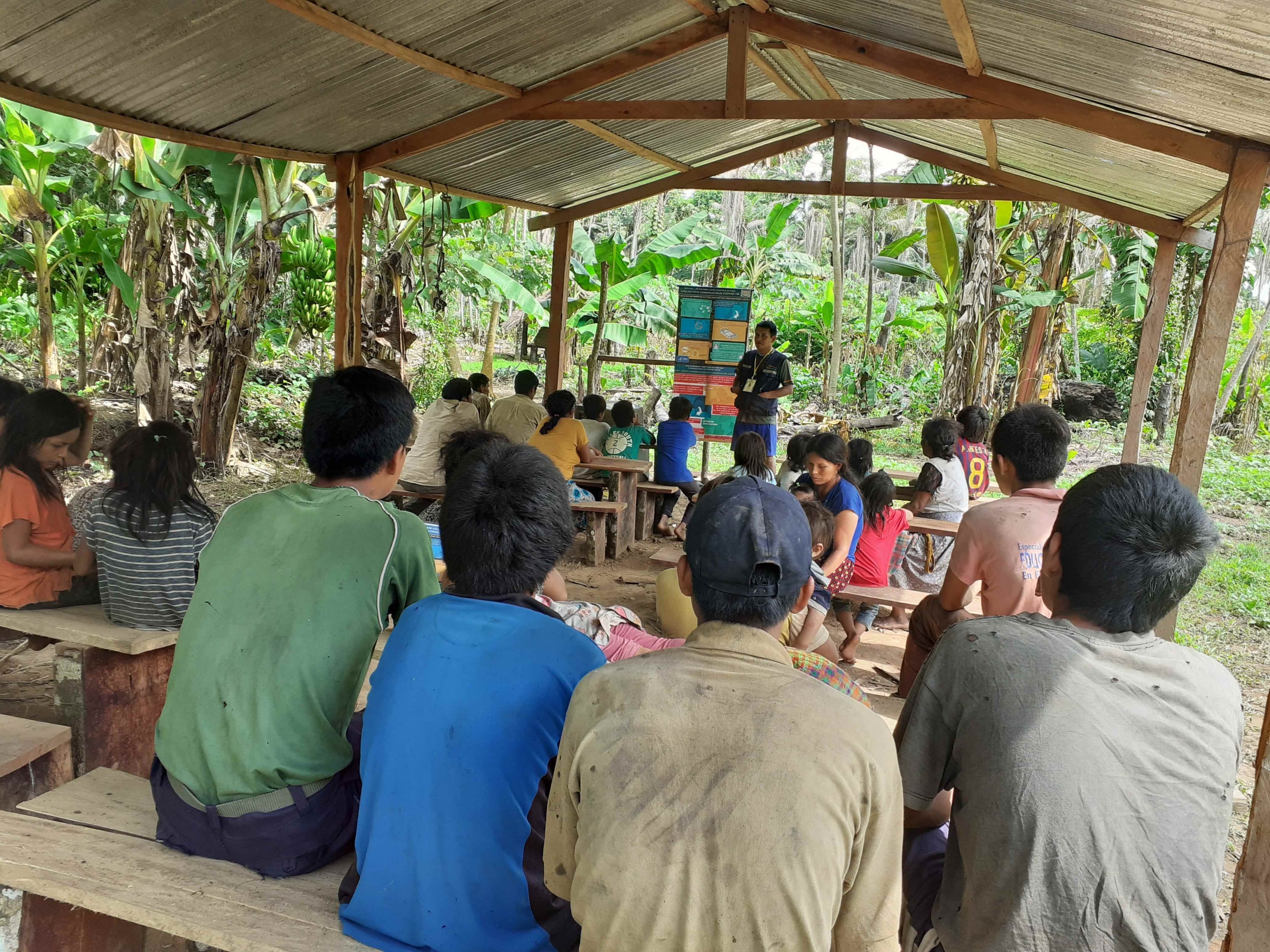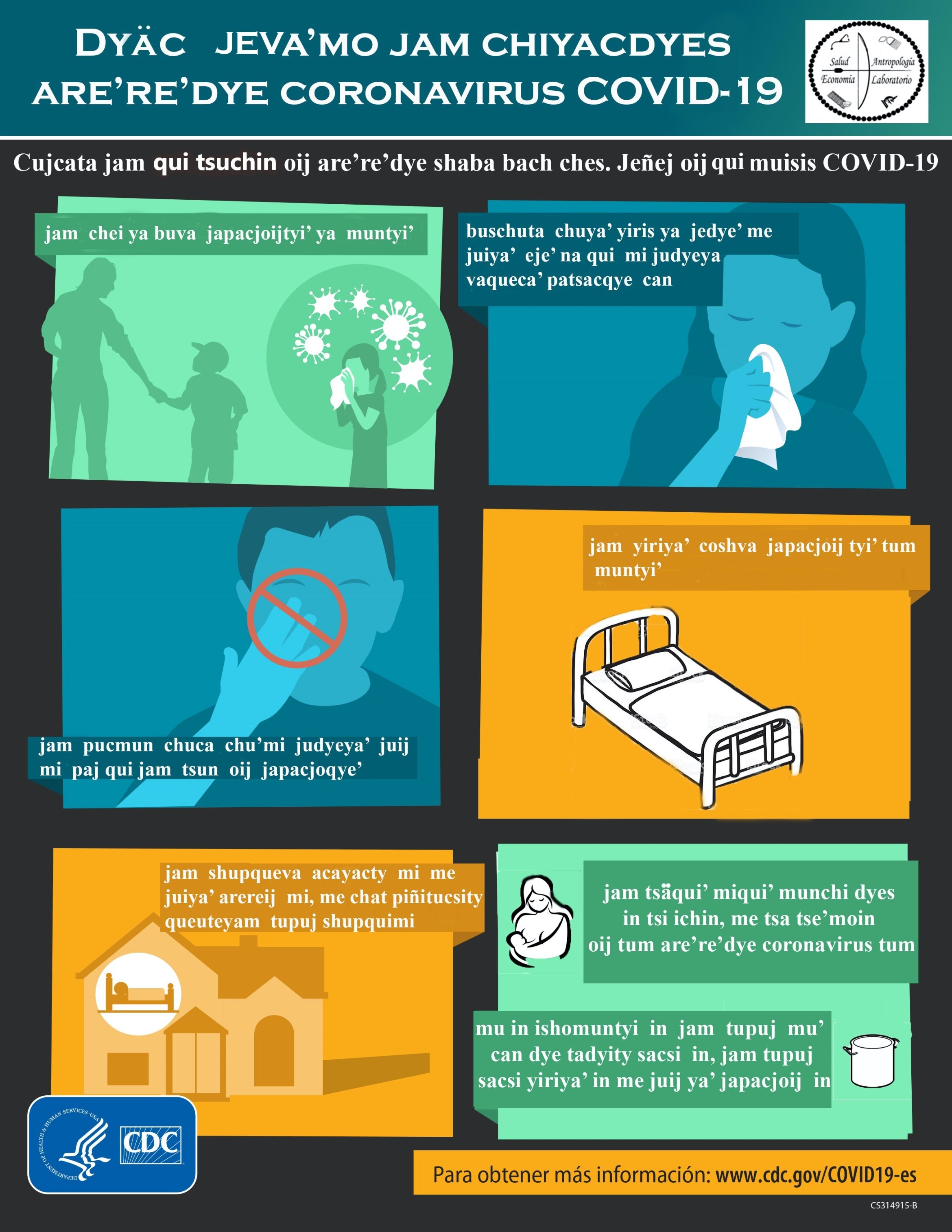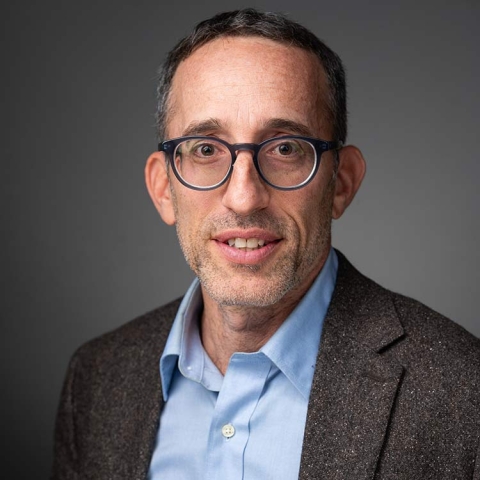
Indigenous peoples suffered disproportionately from the COVID-19 pandemic, experiencing a lack of sovereignty, limited infrastructure and discrimination in local healthcare systems that make them particularly vulnerable to infectious diseases. Yet little research exists to guide interventions and public health efforts tailored to remote-living Indigenous populations during pandemics.
In Bolivia, for example, a team of researchers including UC Santa Barbara’s Tom Kraft and Michael Gurven, and local collaborators, attempted to mitigate SARS-CoV-2’s impact on the Tsimané, a small-scale Indigenous society living in remote areas of the Amazon. The effort centered on a strategy of voluntary collective isolation, in the hopes that remoteness, coupled with self-sufficiency in food production and a culture of resilience, would act as a buffer against disease.
A new study by the same team, now published in the journal PLOS Biology, set out to test whether voluntary collective isolation was likely to be effective at preventing rapid spread of COVID-19 transmission among Tsimané. The authors used 20-plus years of data on Tsimané population structure, movement patterns and social networks to build a computer model to assess Tsimané vulnerability to COVID-19. The simulation predicted that without any intervention, approximately four out of every five Tsimané would be infected during an outbreak, and that even the most remote communities (more than 100 km from the nearest market town) would be affected. It also revealed that without severely curtailing travel, voluntary collective isolation was likely to fail.
Sadly, the researchers confirmed their model's predictions, observing a nearly identical rate of infection in the real world across Tsimané communities, based on serological testing of individuals after a first wave of COVID-19 infections.
“Remote-living, small-scale populations are highly vulnerable to global diseases,” said Kraft, an anthropologist from both UC Santa Barbara and the University of Utah, and the lead author of the study. “We can’t rely on remoteness and voluntary isolation alone to mitigate risks — we need to plan to direct medical resources to these communities.”
The Tsimané are one of several Indigenous tribes who hold collective title for much of the Estación Biologica del Beni and Pilón Lajas Biosphere Reserves and Indigenous Communal Lands, protected areas on the eastern flank of the Andes Mountains. They share characteristics common to many small-scale Indigenous societies, making this case study a useful reference for understanding infectious disease dynamics and public health interventions in other populations globally.
The researchers designed their model to simulate the introduction of SARS-CoV-2 from the closest urban market town, and its spread among Tsimané communities. The idea for the study began at the outbreak of the pandemic. Many of the authors have worked with the Tsimané through the Tsimané Health and Life History Project, which operates a mobile medical team that travels between villages to provide aid, while also conducting biomedical and anthropological research. Senior author Gurven, a professor of anthropology at UC Santa Barbara, co-founded the project back in 2002.
For this work amidst the pandemic, the team wanted to understand how best to direct public health messages and deploy their limited medical resources.
“At the time, there was great concern about what COVID might do if it reached the remote Amazon,” Gurven said. “So we shut down our normal operations and went into full COVID prep, hoping it wouldn’t spread. When COVID hit anyway, we then went into full surveillance mode, poised to help lessen the spread, and to help treat severe cases.”
The Tsimané are mostly self-sufficient by small-scale farming of plantains, manioc, rice and corn, and by hunting and fishing.

But with better roads and outboard motors, they now come into greater contact with Bolivian merchants, colonists and others in local towns. About 18,000 Tsimané live in over 95 villages spread along rivers and logging roads — the farthest requires a multi-day boat trip to the market town. Multiple generations live together in large extended households. The close-knit community is quite social, and individuals travel frequently between villages to visit friends and family.
The authors evaluated how these characteristics would influence the extent and trajectory of disease spread, the community- and individual-level risk factors for susceptibility of infection and the effect of various intervention scenarios.
“The Beni region of Bolivia is pretty remote, and medical facilities are hard to come by,” said Dr. Daniel Eid Rodriguez, a physician and medical coordinator for the Tsimané project based in Bolivia. “Any information that can help us make informed choices to best direct limited health resources is a blessing.”
To the researchers’ surprise, the remoteness of the Tsimané communities made little difference in preventing the spread of COVID-19, both in computer simulations and observed infections. Once introduced, the disease spread in a chain reaction to even the most isolated villages, as predicted by the model. The timing and magnitude of infection differed in the short term, with communities closest to market towns getting infection peaks earlier than remote villages. Yet the smaller, more isolated villages experienced the largest outbreaks proportionally, challenging the intuition that epidemics are likely to be limited in remote, low-density populations. The authors suggest that for maximum impact, public health efforts in the future should focus on dispersing limited medical and messaging resources across remote communities, rather than concentrating efforts solely on denser communities closer to urban centers.
Simulations of different intervention strategies had mixed effectiveness. Restricting travel to market town alone slowed transmission, but made essentially no difference in the final outbreak size. Even extreme travel restrictions showed limited efficacy; simultaneously reducing 90% of travel to town and between villages substantially slowed transmission but was predicted to reduce the overall proportion of adult Tsimané infected by only 15%. The model also found that if transmission rates were cut by half via social distancing or face coverings the cumulative infection in the populations was predicted to drop by 35%, as opposed to merely slowing the rate of infections via travel restrictions. Though that is a substantial impact, many local people were resistant to the use of face coverings or other interventions such as vaccines. Taken together, the team’s findings suggest that efforts that only encourage face coverings or that limit contact with urban dwellers are unlikely to control the spread of infections to Indigenous communities.
“Our work as anthropologists gives us a window into many of the processes that directly drive disease transmission,” Kraft said. “We hope that this research has allowed us to put the detailed data we collect to a practical use, such that governments, public health officials, and NGOs will be better prepared to make meaningful recommendations for a more diverse array of societies when faced with the next threat.”
Sonia Fernandez
Senior Science Writer
(805) 893-4765
sonia.fernandez@ucsb.edu




